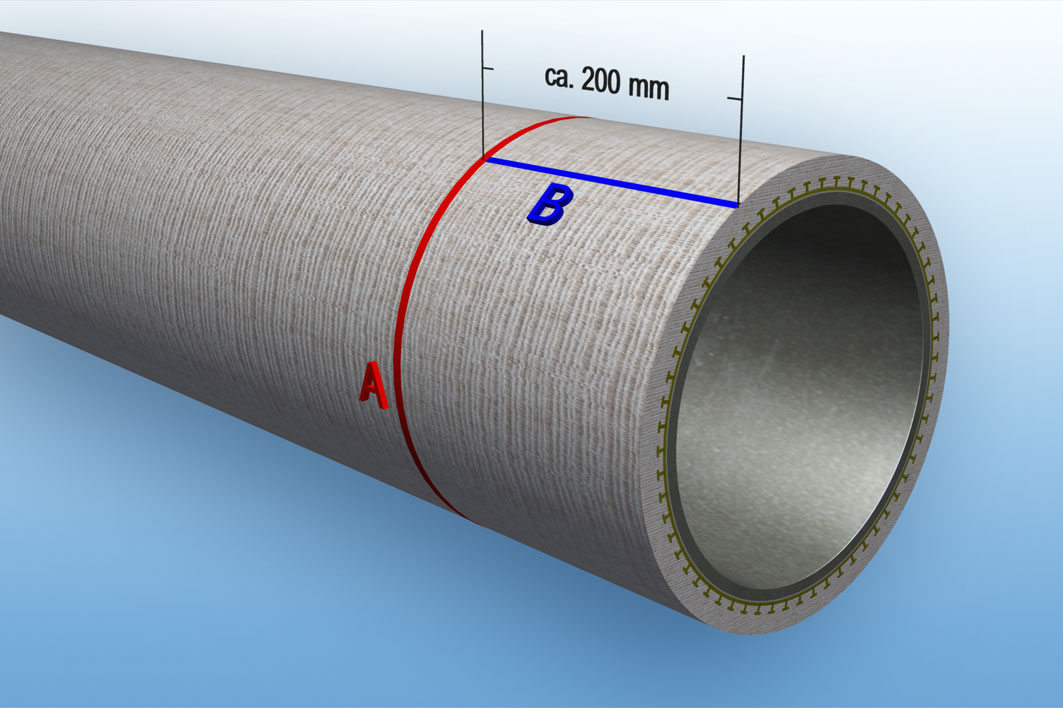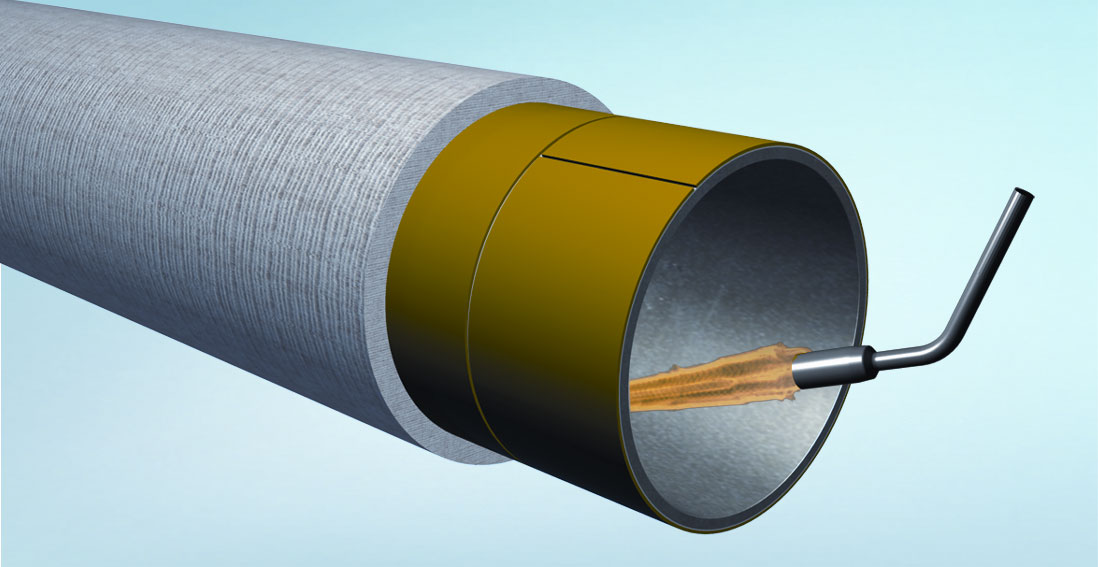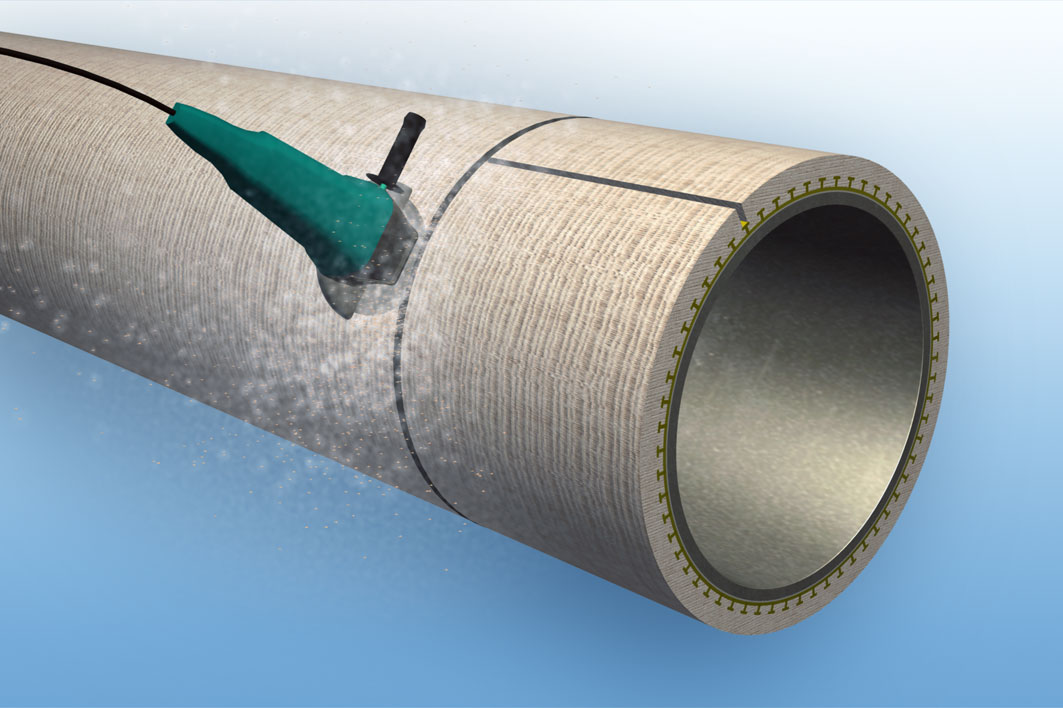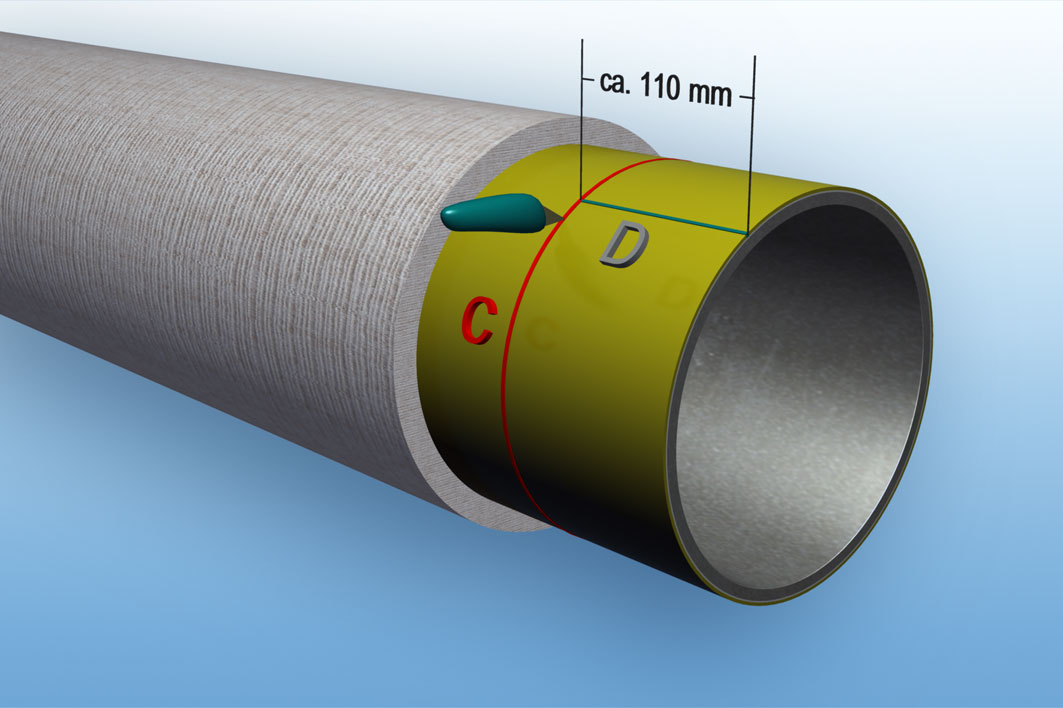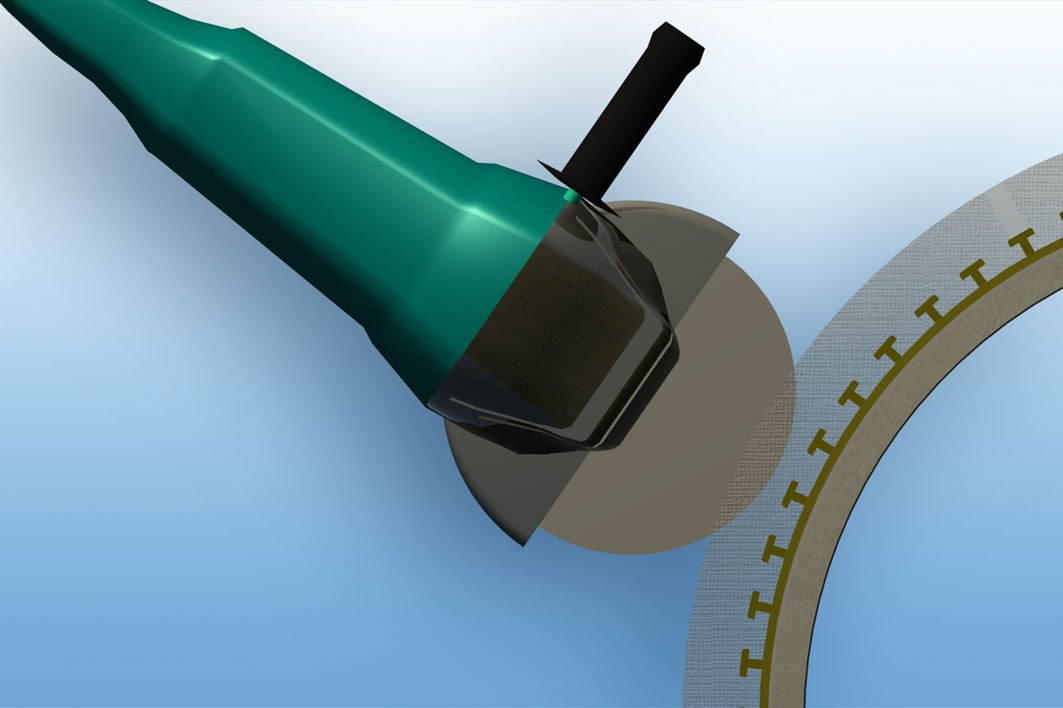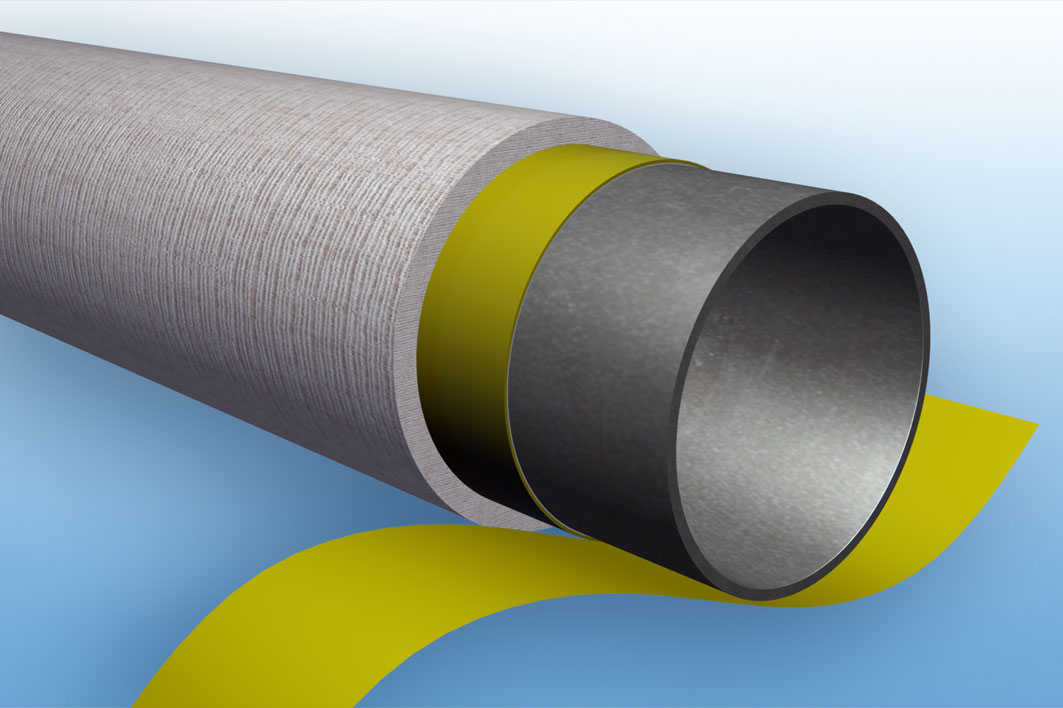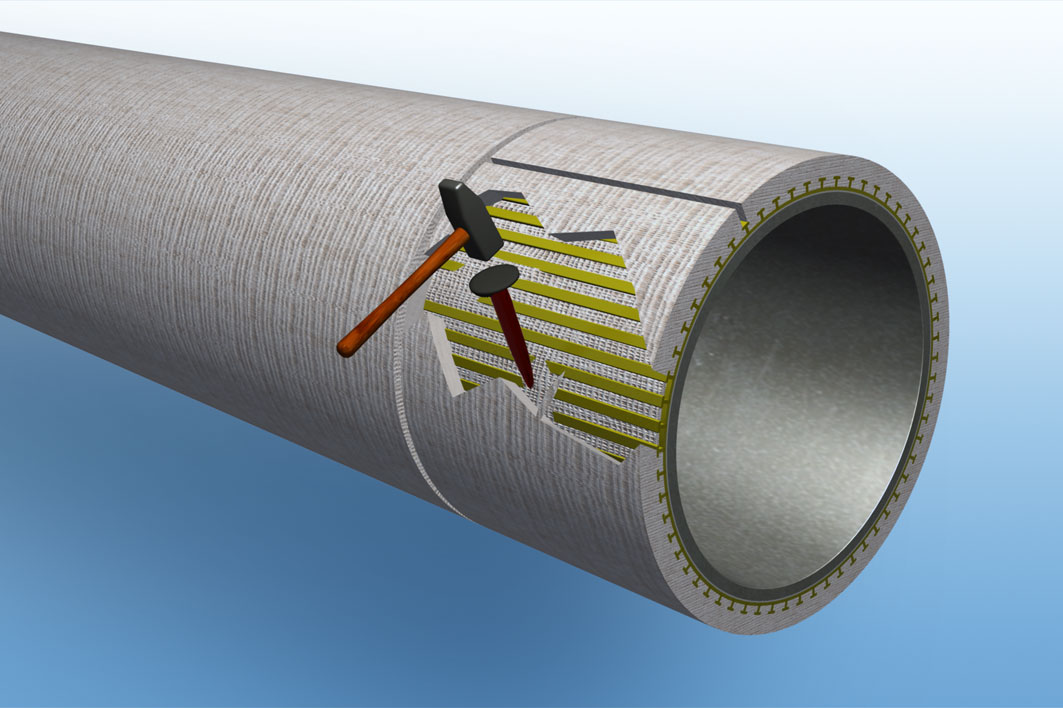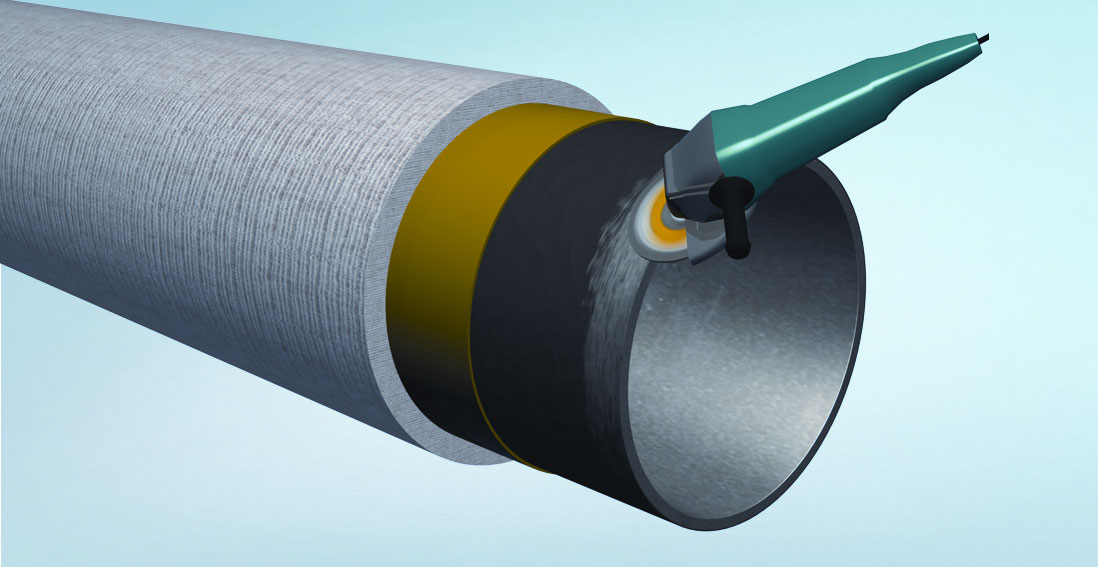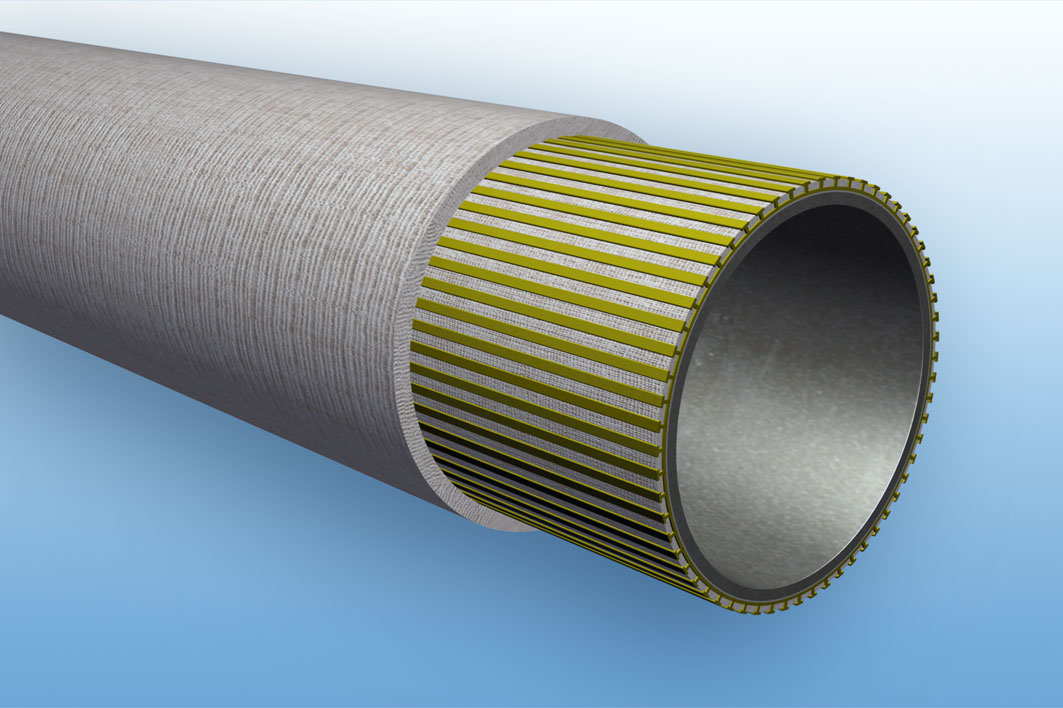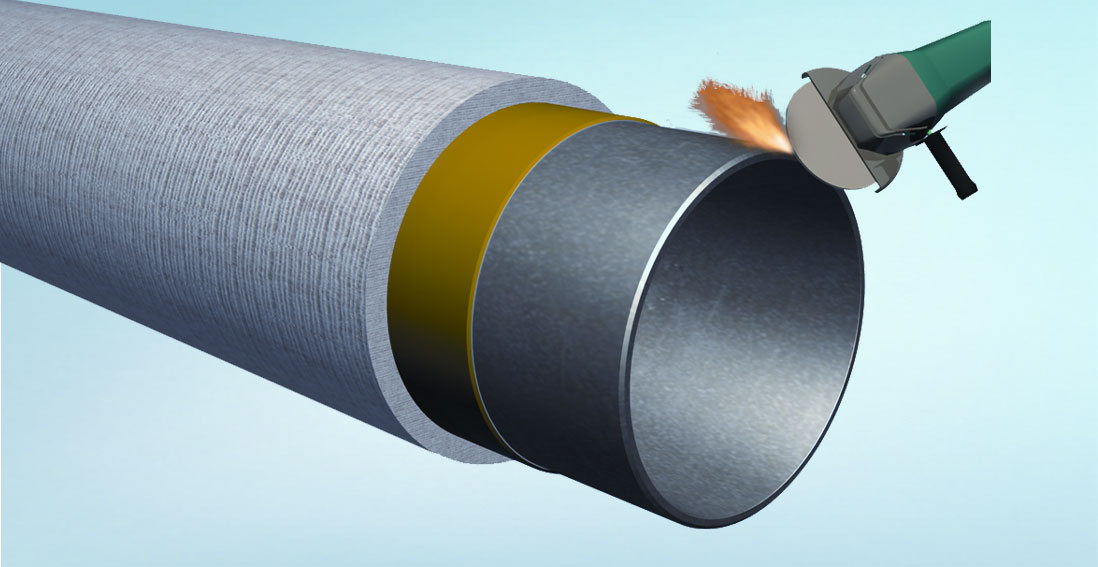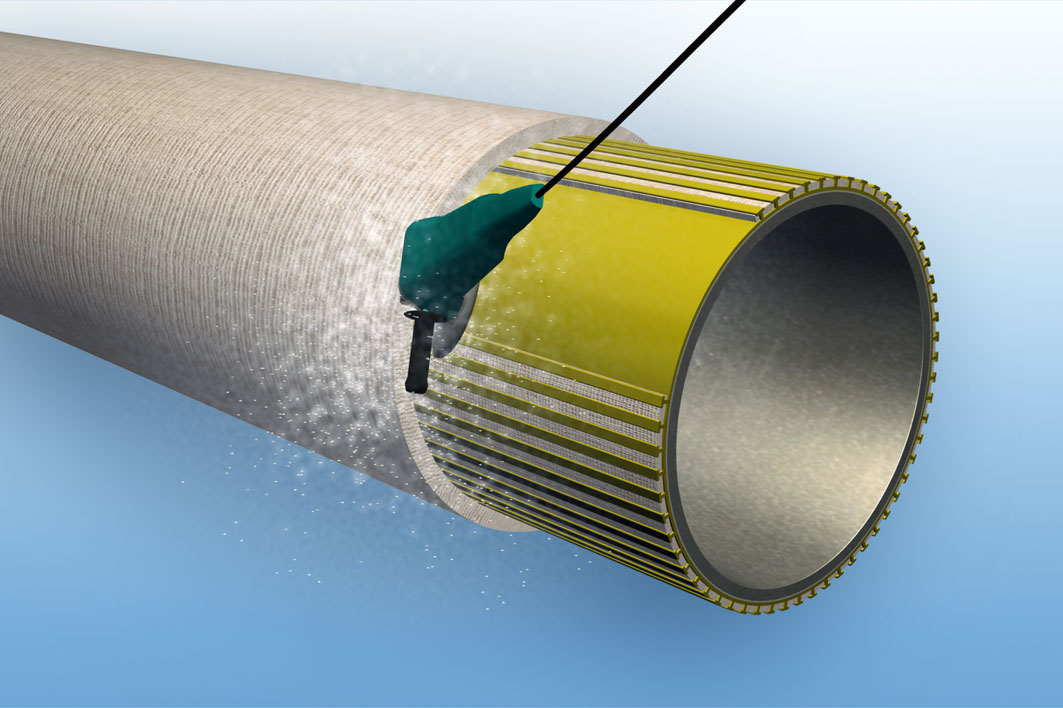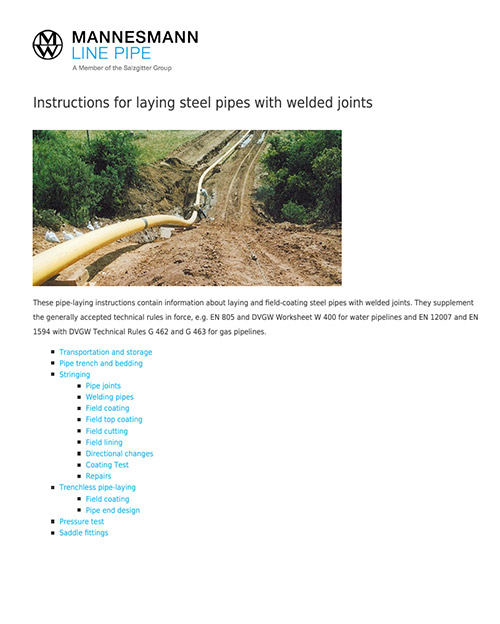Pipe end design
As a rule, shortened pipes are not used in trenchless pipeline sections. We can show you the appropriate procedure for exceptions to the rule.
On-site manufacture of shortened pipes is shown in the PDF file which you can download below.
1 Required tools
- Angle grinder with cutting disc for grinding off the T-profile with adhering mortar
- Scrub disc or rotary steel brush to remove the epoxy resin primer and the adhesive layer
- Blow torch for preheating the pipe end
- Hammer and chisel for knocking off the mortar layer
- Knife for cutting through the PE/PP-coating
